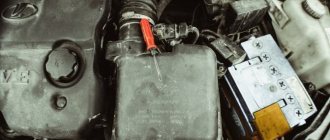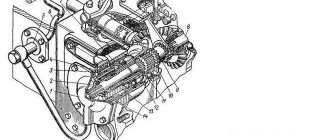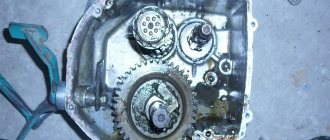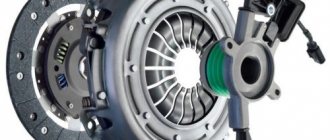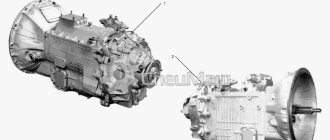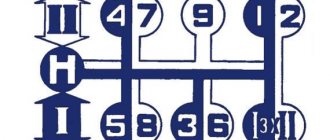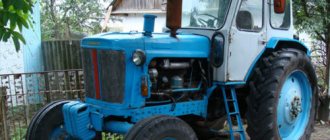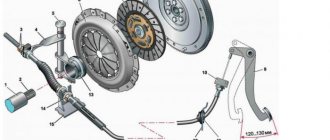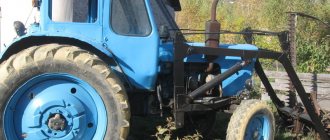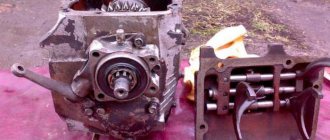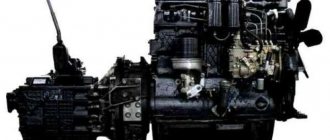24.08.2020
no comments
230229
Cars with a manual transmission have many advantages over cars with an automatic transmission. They are more difficult to operate, but the cost of their repair is much lower compared to an automatic machine. In addition, if you learn to use a manual transmission, then an automatic car will seem very easy to drive. Today we’ll look at what a manual transmission is and how to learn how to operate it.
How does a manual transmission work?
A manual transmission, unlike an automatic one, must be switched by the driver himself. Most manual cars have 4-5 forward and one reverse gears. To learn how to operate a manual transmission, you need to know the location and purpose of each speed. Let's look at each in more detail:
- neutral gear means that the engine's torque is not transmitted to the wheels. When the engine is on and the gear is in neutral, there will be no movement when you press the gas. From neutral gear you can switch to any other position;
- first gear is needed to start moving;
- second and subsequent gears are necessary for speed. Their number depends on the specific car;
- Reverse gear is necessary for acceleration, but not for constant use.
Before you get behind the wheel, it is worth learning the position of each speed on the control lever. This is important because when driving you need to look at the road, not at the lever. Switching speed will come with experience. At first, each driver mentally remembers where the desired speed is. Over time, you will get used to the location, and switching will occur without unnecessary thoughts.
Double-shaft box device
The operation of a manual transmission equipped with a two-shaft gearbox follows the same principle as a three-shaft gearbox. The only difference is the gear arrangement. Instead of one on the drive axle, there is a whole block of gears. The intermediate shaft is missing, but the two remaining shafts run parallel to each other.
In general, a two-shaft system has a high efficiency, but the gear ratio on such systems is quite low. It is for this reason that twin-shaft gearboxes are installed only on passenger cars. For trucks, the gear ratio should be higher.
Pedals location
A car with a manual transmission has three pedals:
- The left pedal is the clutch;
- Middle pedal – brake;
- Right - gas.
The location is the same for both right-hand and left-hand drive cars.
The clutch pedal serves as a separator between the engine and the wheels and allows you to change the gearbox. It must be pressed before each switch. It is clear that the brake pedal is necessary to stop, and the gas pedal is necessary to move.
To shift the gearbox correctly, you must fully depress the clutch pedal. Otherwise, turning on each speed will be accompanied by a grinding noise, which will inevitably lead to breakdown.
Manual transmission - characteristics
Starting the story about the gearbox, it’s worth briefly understanding - why is it needed at all? After all, everyone knows that the main thing in a car is the engine, so is it really impossible to directly transfer the work it does to the wheels, without inventing complex schemes with a bunch of gears, a third pedal in the cabin and a lever that must be constantly turned? Unfortunately no.
The best way to answer this obvious question is to look at the bicycle, or rather its evolution. The simplest option consists of two sprockets connected by a chain drive. By rotating one - the driving - sprocket with the help of pedals, the rider sets in motion the second - the driven one, connected directly to the wheel, thus rotating it.
The bicycle moves forward, everyone is happy and satisfied. At least, they were up to a certain point - as long as the bicycle was used to move on relatively flat and horizontal surfaces. Having suddenly found out that sometimes there are hills, loose soils and other inconveniences along the way, people started thinking about improving the design. The result was what can be called the prototype of a manual transmission - sets of sprockets at the front and rear, allowing you to change the gear ratio.
The gear ratio is a quotient obtained by dividing the speed of the driving star by the speed of the driven one, that is, the number of their revolutions. It is the inverse of the gear ratio, which is calculated as the ratio of the number of teeth on the driven sprocket to the number on the drive sprocket. Simply put, the smaller the driving star and the larger the trailing star, the easier it will be to rotate and the slower it will move.
Again we remember the old bicycles: the front pedals had to rotate a large sprocket, while the sprocket on the rear hub was small. As a result, when trying to get going in some Ural as a child, you had to put all your weight on the pedals to turn the rear wheel. Well, now stores are replete with a scattering of two-wheelers, even the most budget ones of which have several stars in the back and front.
Thanks to this, you can, for example, change the set: the driving sprocket will be small, and the driven sprocket will be large. Then the pedals will rotate very easily, but you won’t be able to accelerate much. But it will be possible to ride up the hill, rather than drag it.
Purpose of the checkpoint
The gearbox is designed for several tasks:
- torque changes,
- speed changes,
- correcting the direction of movement of the car,
- disconnecting the internal combustion engine and transmission and, on the contrary, connecting them (this need is relevant when changing gears, the need to obtain low “creeping” speeds, and short-term stopping of the vehicle),
- locking the torque converter (the function is valuable for reducing the loss of useful energy of the “automatic” when transmitting torque in a situation where the speed of the driven and driving turbines is equalized).
At the same time, some gearboxes are capable of solving all these problems, while others, such as a mechanical one, only do the basics - changing torque and speed. The design of the device depends on the type of gearbox. The housing of the gearbox with “mechanics” combines shafts (2, 3 or more), a synchronizer, gears, a gear shift lever, wire rings, bearings, and oil seals.
The principle of gear shifting on mechanics
The operating principle of a manual transmission is based on connections between the input and output shafts through combinations of gears with different numbers of teeth. In other words, the engine operates by changing the number of revolutions, regulating the force on the drive wheels. This allows you to achieve optimal engine operation when starting to move, accelerating and decelerating. The principle of operation does not depend on the drive, but each model will have its own characteristics.
The mechanical box is designed for smooth and uniform distribution of the torque element. The manual transmission includes several gears, which are controlled using a lever. The connecting element between the gearbox and the engine is the clutch. The constantly rotating crankshaft is meshed with the transmission input shaft. And the clutch allows you to separate and connect these elements, due to which movement occurs.
To get a consultation
Operating principle and design of a three-shaft manual transmission
The fundamental principle of the operation of a manual transmission is the gear interaction of gears, which are enveloped in transmission fluid located in the gearbox housing.
This manual transmission includes:
- driving and driven shafts;
- intermediate and additional shafts;
- frame;
- synchronizers;
- gear sets;
- gear switching mechanism with locks and locking mechanisms;
- gear shift lever.
Bearings located in the housing ensure rotation of the shafts. Each shaft has a set of gears with a different number of teeth.
The drive shaft is connected to the engine via a clutch basket, the driven shaft is connected to the cardan shaft, and the intermediate shaft transmits torque to the secondary shaft.
There is a drive gear on the input shaft, which spins the intermediate gear with a firmly fixed set of gears located on it. The driven shaft has its own set of gears moving along splines.
Between the gears of the secondary shaft there are synchronizer clutches, which equalize the angular speeds of the gears with the revolutions of the shaft itself. The synchronizers are firmly attached to the shafts and move longitudinally along splines. On modern manual transmissions, such clutches are located at each stage.
How to learn to drive a manual car
Start.
When you first try to learn how to drive manually, it is important not to rush, but to do everything consistently. Before you start driving, the first thing you need to do is fasten your seat belt. If training takes place in the warm season, you can open the windows to better hear and understand the engine. Next, you should adjust the seat so that you can reach and press the pedals without effort. At this point, you can learn to release the clutch smoothly.
Then you need to move the shift lever to the neutral position, from which it can move freely in different directions. After this, you can start the engine using the ignition key and pressing the clutch pedal all the way.
To start driving, you need to press the clutch pedal, shift to first gear, slightly lift your foot off the clutch and press the gas pedal. To start moving, the car needs to put in a lot of effort, which is why the engine may stall at this moment. A smooth start of movement is ensured by simultaneously pressing the gas and clutch pedals.
In order to engage the gear, you need to fully depress the clutch pedal and smoothly move the lever. If there is resistance or strange sounds, return the lever to its original position, release the clutch and press again. When the desired position is switched on, the force of the lever will decrease and its movement will stop as it collides with the limiter.
In frosty weather, you can start from second gear to avoid slipping or skidding. To do this, you need to select second gear and smoothly balance between the clutch and gas pedals.
Movement.
To move your car smoothly, you need to understand:
- at what point should you change gears;
- how to achieve optimal dynamics;
- what not to do so as not to break the gearbox.
Proper shifting of gears when driving ensures correct dynamics of the entire manual transmission system, extends its service life and reduces fuel consumption. The most important recommendation for novice drivers is to monitor the tachometer readings. At readings from 2.5 to 3.5 thousand revolutions per minute, the engine operates most correctly and there is no need to switch to another gear. At higher tachometer readings, it is necessary to switch to a higher gear to reduce the load. The clutch pedal should be pressed all the way down. When the speed decreases, it is necessary to switch to a lower gear. To drive without jerking.
When accelerating, you need to switch gearboxes one by one, starting from the first one and reaching the desired one. Switching through several stages is generally not prohibited, but you should do this with extreme attention to the clutch. If the pedal is not fully depressed, there is a risk of damage to the gearbox shafts.
Thanks to manual transmission, you can prepare in advance for difficult road conditions. For example, if you follow the traffic rules, changing gears to a lower gear is necessary:
- when approaching a steep climb;
- when driving down a dangerous slope;
- when overtaking;
- on sharp turns.
A manual transmission can help even in situations where you cannot use the brake. For example, on a slippery road or when driving downhill. In these cases, you can brake using the engine. You need to release the gas and shift from high to low gear until the speed drops. But do not increase the speed too much and, if possible, use the brake.
Read more: how to brake correctly with manual brakes.
Reduce speed and stop.
To reduce speed, you need to switch to a lower gear. If the speed is too slow for the current gear, the car will vibrate as if it is about to stall. To reduce speed, press the clutch, release the gas, change gears, release the clutch while pressing the gas pedal. To stop, change gears one at a time until you are in first gear.
If you need to stop, press the brake with your right foot. When reaching a speed of 15 km per hour, the car will vibrate. At this moment, you need to fully press the clutch, move the lever to neutral and press the brake to finally stop.
You can stop in any gear. To do this, you need to fully press the clutch, press the brake and switch to neutral. But in this case, control over the car is weakened, so this method can only be used as a last resort. In any case, you can watch manual driving lessons for beginners, how to properly start with a manual, step-by-step instructions.
Pros and cons of a manual transmission
Advantages of manual transmission:
- it is possible to tow the car to any route distance, even with the engine turned off;
- it is possible to start the car from a pusher when the battery is discharged or there is a malfunction in the ignition system;
- smaller dimensions and weight than an automatic transmission;
- the dynamism of the vehicle, the ability to choose the driving style by appropriately changing the engine speed;
- it is possible to use to the maximum all the capabilities of the engine at the speeds regulated by the manufacturers at each speed, at which the torque is maximum or close to it;
- dynamic acceleration and fuel economy compared to an automatic (with aggressive and sporty driving styles, consumption increases);
- simplicity of design;
- reasonable price for maintenance and repairs, especially in comparison with automatic transmissions;
- great work resource.
The disadvantages of manual transmission include:
- the difficulty of driving cars with manual transmission, especially for beginners;
- clutch, which can be burned by inexperienced drivers or with regular slipping in snow and ice;
- due to inexperience, there is a possibility of damaging the transmission when switching to reverse gear when moving forward or operating the clutch incorrectly;
- reduced engine life due to too low or, conversely, high speeds, the automatic transmission will not allow this to happen;
- when switching gears is not fast enough and when switching at too low speeds, a significant loss of engine power occurs;
- increased fatigue due to the need to control the clutch, selecting and changing gears, especially for inexperienced drivers;
There are quite a lot of advantages of a manual transmission, and the disadvantages will disappear as you gain experience driving a manual transmission.
Important rules for driving a manual transmission
Cars with a manual transmission are more durable and reliable than cars with an automatic transmission. But operating a manual transmission also requires special attention. You need to know a few simple rules to make your manual car last longer:
- Do not leave your foot on the clutch pedal. Often, drivers leave their foot on the clutch pedal when switching from one gear to another, but this is not recommended. Take your foot off the pedal immediately after changing gear, otherwise you risk damaging the release bearing and clutch disc;
- It is prohibited to engage 3, 4 and 5 gears at low engine speeds. When the gears are unevenly engaged, a large load is created on the manual transmission, which over time will inevitably lead to wear of all clutch parts. From the very beginning, get used to shifting gears at the desired engine speed, so that later you don’t have to relearn;
- Do not press the clutch pedal when stopping on a slope, otherwise the disc will quickly wear out. To keep the vehicle from rolling down when going uphill, press the brake pedal. And when you need to start, press the clutch, then smoothly step on the gas, releasing the clutch;
- At traffic lights, you should shift to neutral rather than pressing the clutch while the speed is engaged. If you leave the high-speed gear when stopping, the clutch system is under heavy load, which will lead to its rapid wear;
- You should not leave your hand on the gear shift lever, as this habit creates pressure on the gearbox. Over time, unnecessary pressure can lead to wear on the gear shift mechanism and other gearbox parts;
- on slippery roads, do not disengage the clutch and do not drive in neutral gear;
- in winter, you cannot leave the car with the gear engaged;
- undergo regular technical inspection, do not forget to clean the gearbox and maintain the required oil level.
These simple rules will help maintain the performance of a car with a manual transmission and serve it as long as possible.
Familiarization with the driver's seat
As you know, the driver's seat is equipped with three pedals:
- left - clutch. Clicking on it allows you to switch speeds.
- lental - brake. Serves to brake and stop the car.
- left - gas. Necessary for overclocking.
The left foot operates the clutch, the other two pedals are controlled by the right foot.
To the right of the seat is the gear shift lever. On its handle, there are often numbers corresponding to speeds: Arabic or similar Roman. Reverse is usually indicated by the letter R.
The location of the gear shifts is not the same on cars of different brands . Before you start driving, you should familiarize yourself with the gear shift diagram.
There is a tachometer on the car's instrument panel. It will help novice drivers determine when to shift gears.
Basic mistakes of novice drivers
Novice drivers often make the same mistakes:
- they don’t understand when to change gear, which is why the engine runs at very high speeds, the car loses speed, and the driver loses control of the movement;
- Beginners are unable to start driving due to the sudden release of the clutch pedal. This is why the car stalls. Over time, this can lead to wear and tear on all parts of the box;
- delay in turning on second speed. When starting to move, you can switch to second gear quite quickly, but beginners forget about this;
- they do not remove their foot from the clutch pedal, which causes it to wear out faster and the foot to get tired;
- When changing gears, the left hand begins to turn the steering wheel.
When you know what mistakes novice drivers make, you will remember in advance and avoid making such mistakes.
To get a consultation
Clutch operation
The following example will help you understand the principle of operation of the clutch assembly: imagine a rotating metal rod with a disk at the end, symbolizing a crankshaft with a flywheel. If you bring another disk to the plane of the disk, then after contact it will also begin to spin. This is basically how a car clutch works, only the second disc is mounted on a shaft that goes further to the gear transmission.
The system operates due to frictional force, so the contacting surfaces have a special anti-friction coating . The clutch disc in a manual transmission is moved by a fork-shaped lever. The lever is not mechanically connected to the clutch pedal; it is moved by a hydraulic cylinder. Pressing the pedal compresses the fluid in this cylinder, the piston extends and moves the lever.
The clutch operation algorithm when moving from a standstill is as follows:
- At idle, the crankshaft and input shaft of the manual transmission rotate as the discs are engaged.
- By pressing the pedal, the driver moves the disc and the transmission shaft stops. It can now be connected to the gear train by selecting the first speed.
- By pressing the gas, the driver achieves an increase in speed and slowly releases the clutch pedal. The discs engage again and the car moves off.
It is necessary to further break the mechanical connection using the clutch when switching to another speed. To understand this process, you need to understand how the gearbox itself works.
Secrets of saving fuel consumption
There are several features that can help reduce fuel consumption and engine load:
- When accelerating, you should change gears faster. Shift moments are individual for each car, but the transition from first to second gear is optimally done at a speed of 25 km per hour. You can move to the next steps when you reach 55-60 km per hour;
- when the engine is running extremely hard, it is worth shifting to a higher gear if the car does not need such power to maintain speed;
- switching to a lower gear is necessary if the car slows down without pressing the gas pedal. You should avoid driving slowly in high gears, as this greatly increases fuel consumption.
Many novice drivers are afraid to drive a car with a manual transmission. But if you master and understand the principle of control, then any car with an automatic transmission will be easy for you to drive. Each driver chooses for himself which gearbox to drive. But having mastered the mechanics, you will gain an unforgettable experience and driving skill that can help you when a difficult situation arises. You can view a manual driving lesson here
Share on social networks:
More useful on the topic
How to sign up at the traffic police to take exams to obtain a driver's license
21.02.2022
What you need to get your driver's license in 2022
10.02.2022
What is automatic transmission
An automatic transmission (AT) is a transmission that independently determines the most appropriate gear ratio depending on the current speed limit. The automatic transmission, without driver intervention, selects and switches the desired gear ratio, adapts to the speed set by the driver, and ensures a smooth start and smooth ride of the vehicle. The automatic transmission removes the lion's share of the load from the driver while driving compared to a classic manual transmission.
Since there are now different options for automatic transmissions (robots and CVTs), to avoid confusion, automatic transmissions are also called: classic automatic, hydraulic automatic, hydromechanical transmission, planetary automatic.
Automatic transmission resource
There is no exact value for the service life of an automatic transmission. This will depend on the correct operation of the car with automatic transmission, timely maintenance of the gearbox: changing the oil and oil filter, using original spare parts and oil. Some models of automatic transmissions are designed for 100-150 thousand mileage, modern car models are equipped with automatic transmissions designed for 500 thousand km or more, and do not require an oil change.
You can read more about changing the oil in automatic transmissions in our article: Changing the oil in automatic transmissions
Transmission classification
Let's consider the classification of transmissions.
According to the methods of transmission and torque conversion, transmissions are divided into electromechanical, mechanical and hydromechanical.
Mechanical transmission
Mechanical transmissions (conventional and planetary) in the gearbox contain only friction and gear devices. Their advantages lie in efficiency, low weight and compactness, ease of operation and reliability in operation. The disadvantage of this type of transmission is the stepwise change in gear ratios, which reduces the use of power from the power unit. Taking a long time to shift the gear lever makes driving difficult. That is why sports cars equipped with a manual transmission are equipped with electronic gear shifters (buttons on the steering wheel, paddle shifters) and gearboxes with ultra-fast synchronizing servomechanisms.
The use of mechanical transmissions is typical of Soviet tractor construction.
Hydromechanical transmission
Transmissions of the hydromechanical type are equipped with a hydromechanical gearbox, which consists of a mechanical gearbox and a hydrodynamic torque converter. The advantages of such transmissions include the possibility of automating gear changes and facilitating control, automatically changing torque based on external resistances, filtering torsional vibrations and reducing peak loads acting on transmission units, thereby increasing the durability and reliability of the piston engine transmission.
The main disadvantage of such transmissions is the rather low efficiency due to the insufficiently high efficiency of the torque converter. If the efficiency of the hydraulic transmission is not less than 0.8, the torque range is not higher than three, which makes it necessary to have a mechanical gearbox for 3-5 gears, including reverse gear. It is necessary to have a special cooling system, as well as replenishment of the hydraulic unit, which increases the overall dimensions of the engine-transmission section. Without clutches or special autologs, engine starting from a tug and engine braking are not provided.
Transmissions of the hydromechanical type are actively used in Western tractor manufacturing - Leopard-2 (Germany), M1 Abrams (USA). In the transmissions of the listed tanks, in the main drive, in addition to hydromechanical gears, hydrostatic gears are also used in the additional drive to perform rotation. A Hungarian-made diesel train called D1, operating in the post-Soviet space of railway equipment, is equipped with a hydromechanical transmission.
Hydraulic transmission
A hydraulic transmission in transport technology is a transmission in which switching is carried out not by a mechanical method, but by hydraulic devices, because Purely hydraulic transmissions are quite rare. A transmission of this type is equipped with a gearbox with secondary and input shafts, and also, as in a conventional gearbox, several pairs of gears, but the inclusion of the required pair in the working process is performed not by a friction or cam clutch, but by a fluid coupling or a torque converter, which is filled to engage the gear .
The main advantage of this type of transmission is that gear engagement is completely shockless and there is a complete absence of mechanical couplings that work stably during the transmission of large torques (for example, on diesel locomotives); the main disadvantage is the need to install a separate fluid coupling for each gear. Due to its characteristics, hydraulic transmission is used mainly in railway equipment. Of the domestic varieties of equipment, for example, the DR1 diesel train and the TGM6 and TGM4 shunting diesel locomotives are equipped with hydraulic transmission.
Hydrostatic transmission
In a hydrostatic type transmission, axial plunger hydraulic machines are used to transmit power. The advantages of this transmission are the low weight and dimensions of the machines, the absence of a mechanical connection between the driving and driven parts of the transmission, which makes it possible to spread them over fairly significant distances and provide a much greater number of degrees of freedom. The main disadvantage of hydrostatic transmission is the high requirements for the purity of the fluid involved in the working process, as well as increased pressure in the hydraulic line.
Hydrostatic transmission is used on road-building machines (mainly in rollers, since there it is necessary to provide a fairly large gear ratio, and also very often drive the rollers from the end, it is difficult to build a mechanical transmission), as an auxiliary one - in aviation equipment, metal-cutting machines, diesel locomotives .
Electromechanical transmission
Transmissions of the electromechanical type consist of a traction electric motor (or several), an electric generator, an electrical control system, and connecting cables. The main advantage of electromechanical type transmissions is the provision of a wider range of automatic changes in traction force and torque, as well as the absence of a kinematic rigid connection between the electric transmission mechanisms, which makes it possible to create different layout schemes.
The main disadvantages that hinder the spread of electric-type transmissions are their large weight, dimensions and price (especially if DC electric machines are used), and lower efficiency (compared to mechanical ones). But with the development of the electrical industry, the widespread use of inductor, valve, synchronous, asynchronous and other types of electric drives, more and more new opportunities are opening up for electromechanical transmissions.
These transmissions are widely used in diesel locomotives, tractors, mining dump trucks, sea vessels, military equipment, self-propelled mechanisms, German military vehicles “Mouse” and “Ferdinand”, as well as buses, which with a transmission of this type are more correctly called thermal electric buses, for example, ZIS -154.
Most modern cars use a manual transmission. A mechanical type transmission in which the torque changes automatically is called an automatic transmission.
Synchronizers
This is an important component of any manual transmission. Synchronizers serve to smooth out the speed of rotation of the gear and shaft. Thanks to synchronizers, gear shifting occurs quickly and smoothly. The device includes:
- Locking ring.
- Hub.
- A gear having a friction cone.
- Engagement clutch.
The hub is the main element of the assembly. It has two slots (external and internal). Due to them, the mechanism is connected to the transmission shaft, moving along it in different directions. Thanks to the external spline, the element is connected to the engagement clutch. Also, the hub design assumes the presence of three grooves. Each is installed at an angle of 1200 relative to each other. These grooves are used for installing “crackers”. What it is? These are spring-loaded elements that fix the clutch in the “neutral” position. With this clutch installation, the box synchronizer does not work. The flywheel rotates freely without transmitting torque to the box. The clutch itself connects the gears to the gearbox shaft. The part is installed on the hub. From the outside it is connected to the gearbox fork.
Image taken from carnovato.ru
A locking ring is used to equalize angular velocities . Smoothing of rotation occurs due to friction. The ring prevents the clutch from closing until the gear and shaft have equal rotation speeds. The inner part of the locking ring has a conical shape.
How does a synchronizer work in a manual transmission?:
- When not working, the clutch is in the middle position. The gears on the transmission shafts rotate freely.
- When the driver selects a gear, the clutch moves to the gear through the fork. In this case, the clutch moves the locking ring. The latter is pressed against the gear cone.
- The ring rotates and blocks subsequent movement of the clutch.
- Due to friction, the revolutions of the shaft and gear are equalized.
- The clutch engages the gearbox shaft and gear.
- Torque is transmitted from the flywheel of the internal combustion engine.
The history of the automatic transmission
The idea of creating an automatic transmission belongs to the German engineer Hermann Fettinger, who developed the first torque converter in 1902, and at first such a transmission was used only for the construction of ships.
The first car equipped with a planetary automatic transmission was the American Ford T. After the release of this car, the most active role in the development of automatic transmissions was played by General Motors, which managed to release a semi-automatic transmission in the mid-1930s. The same GM created the first completely automatic transmission in 1940
Starting the engine with automatic transmission
In cars with automatic transmission there are only two pedals for the driver’s right foot: gas and brake, there is no clutch. When starting the engine, the gas is not pressed, but in most cars you need to press the brake pedal, otherwise the car will not start.
Cars with automatic transmission have a built-in blocking of movement when the selector handle is in the wrong position. A car with an automatic transmission can only be started if the gearbox lever is in the “P” - park or “N” - neutral position. In all other positions of the lever, the car will not start.
This feature is especially useful for novice drivers who may forget to move the lever to the desired position and the car will jerk forward or backward when the ignition is turned on and crash into something.
Most automakers recommend always leaving the car parked in “P” mode and driving away only from this position.
Experienced drivers are advised to always press the brake when starting the engine: this will prevent the car from moving in neutral gear in the “N” position. Also, without pressing the brake, it will not be possible to move the selector to position “D” - start moving and “R” - reverse.
There are slight differences in how to start a petrol and diesel automatic car.
Starting a gasoline engine
- Insert the key into the ignition.
- The selector should be in the “Parking” position.
- Press the brake pedal.
- Turn the ignition key without releasing the brake pedal.
- Allow the engine and gearbox to warm up for some time (especially in winter) so that the oil becomes more fluid. Warming up takes about 5 minutes, or you need to wait until the oil warms up to 70ºC, if such information is displayed on the monitor.
- The selector handle must be moved through all positions so that the oil is distributed evenly throughout all components of the box.
- Release the brake pedal and move the selector to the Drive position, the car will start moving.
Starting the diesel engine
Cars with a diesel engine are equipped with glow plugs, and they must be warmed up before driving.
- Insert the key into the ignition.
- The selector should be in the “Parking” position.
- Wait a while until the glow plug indicator goes off on the monitor. If it is below 20ºC outside, it is recommended to repeat warming up the candles 1-2 more times.
- Press the brake pedal.
- Turn the ignition key without releasing the brake pedal.
- Now, just like with a gasoline engine, you need to let the engine warm up and move the selector knob through all positions to distribute the oil.
- Release the brake pedal, move the selector to the Drive position, and the car will start moving.
After turning the key in the ignition before starting the starter, it is better to wait a few seconds for the fuel pump to start.
